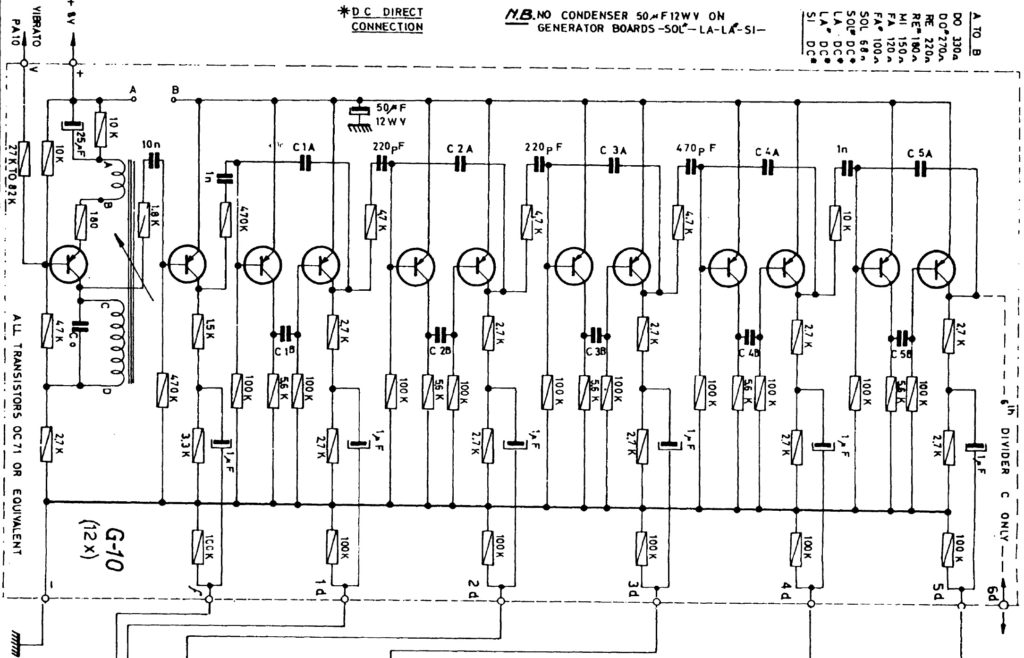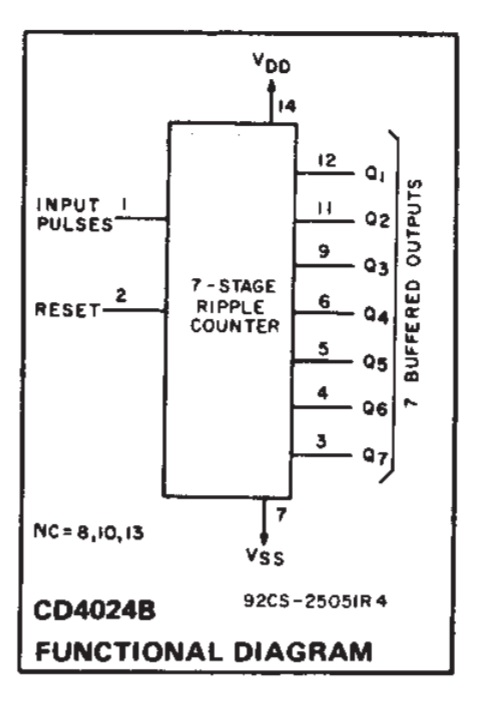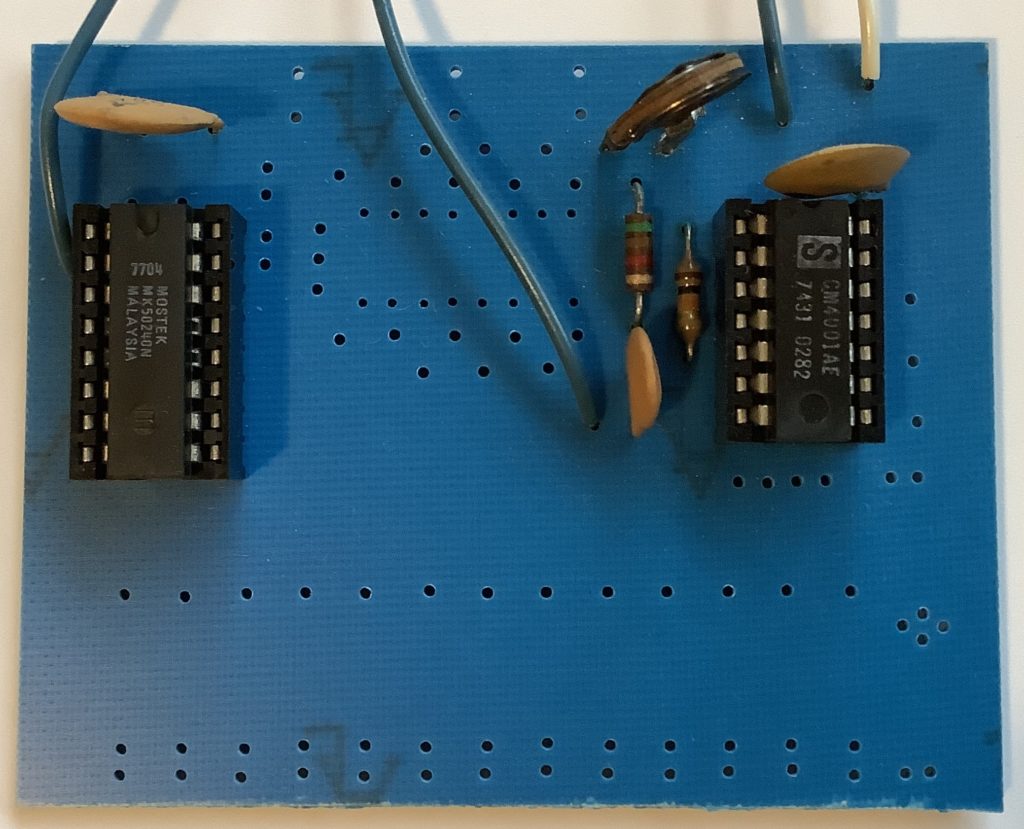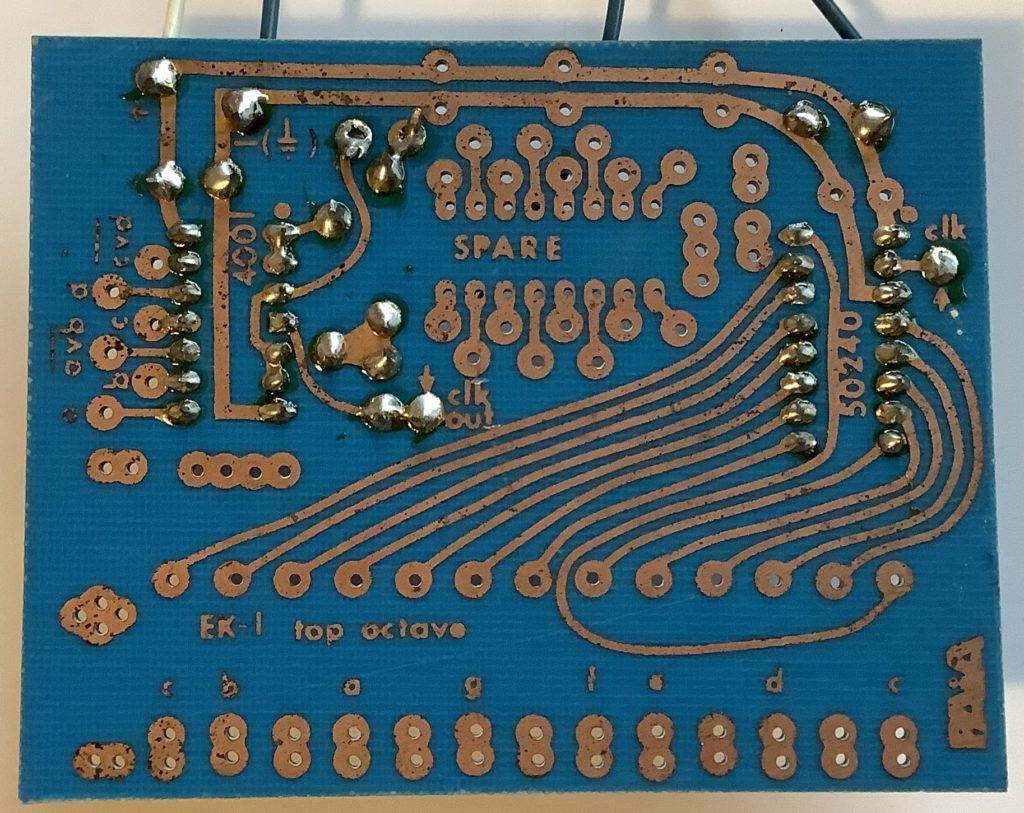So far, we’re taken a short trip through combo organ technology from early days in the 1960s to modern day workstation voices:
I hope you enjoyed those articles! This post fills in the middle bits — how large scale integration changed combo organ design.

During the 60s, Vox, Farfisa and other manufacturers employed a similar approach to tone generation. Each organ contained twelve tone generation boards one for each semi-tone in the Western well-tempered scale. Each board implemented:
- An oscillator to produce the a base root tone, and
- Several (digital) dividers to derive the ancilliary tones one or more octaves below the root tone.
Vox, Farfisa, and so on used discrete components (transistors, resistors, capacitors, etc.) to implement the oscillator and dividers. These boards were dense and busy with many hand-soldered joints. The Farfisa board, for example, contained 12 transistors, 40 resistors, 25 capacitors and a tunable inductor coil. Assembling, testing and debugging a board like that is quite expensive and labor intensive.
Having lived through the transition from discrete semiconductor circuits to small scale integration (SSI) and then large scale integeration (LSI), I can attest to the revolution initiated in the LSI era. (Not to mention the transition to very large scale integration!) LSI and mixed signal components enabled sound generators like the Texas Instruments SN76477 Complex Sound Generator, General Instruments AY-3-8910/8912, and other ICs — and sounds — favored by chip-tune enthusiasts.
LSI revolutionized combo organ design, too. Mostek (and others) introduced top octave tone generator chips. The well-known Mostek MK50240 (PDF datasheet) has inputs for power, ground and master clock:
Pin# Name Purpose
---- ---- --------------
1 VSS Supply voltage 15V (typical) 11V (min) 16V (max)
2 Clock Clock 2000.240kHz (typical), 2500kHz (max)
3 VDD Ground
The MK50240 generates each of the high frequency root tones:
Pin# Note Divisor
---- ---- -------
16 CLow 478
4 C# 451
5 D 426
6 D# 402
7 E 379
8 F 358
9 F# 338
10 G 319
11 G# 301
12 A 284
13 A# 268
14 B 253
15 CHigh 239
The MK50240 has twelve dividers which divide the master clock frequency into the root tone frequencies.
Advantages of the MK50240 should be readily apparent! A single MK50240 replaces all twelve oscillators. Even better, the master clock can be generated from a 2000.240 kHz crystal resulting in superior temperature (pitch) stability. Old discrete circuits are notoriously temperature sensitive.
But, wait, there’s more. Thanks to digital LSI, each divider chain can be replaced by an MOS ripple counter. Consider the CMOS CD4024. (Please see the CD4024B functional diagram below.) The CD4024 is a 7-stage ripple counter that divides the incoming clock signal into seven auxilliary tones at each octave below the input frequency.

The nightmare of discrete oscillators and dividers can be replaced by a single MK50240 and 12 CD4024 ripple counters: 13 dual in-line packages (DIPs) and a handful of coupling capacitors for good measure.
Of course, one must still confront the rat’s nest of wires and signal diodes needed for key switching… To get a sense of wiring complexity, I suggest looking at the design of the vintage PAiA Stringz ‘n’ Thingz digital keyboard or PAiA Oz portable mini-organ. Yes, I assembled a Stringz ‘n’ Thingz — without too many bad solder joints, thank goodness. Organ wiring was a nightmare before microcomputer-based key switch scanning and digital control.
With LSI and micro-computers, organ builders collectively breathed a sigh of relief. Unfortunately, ease of design and manufacture came with a penalty — lack of sonic charm. Each of those old-tyme discrete oscillators were slightly out-of-tune with one another. Thus, there’s a subtle richness in the old discrete designs that is missing in full-on digital implementations.
Before leaving the MK50240 behind, I want to mention the PAiA EK-1 top octave experimenter’s kit.


PAiA was (and is) a terrific resource for experimenters. I built several PAiA kits including the Stringz ‘n’ Thingz and the Gnome synthesizer. I also played with the PAiA EK-1 top octave experimenter’s kit. If you would like to learn more about the Mostek MK50240, check out the PAiA EK-1 instruction booklet. Shame you can’t find many MK50240s today…
Copyright © 2021 Paul J. Drongowski
